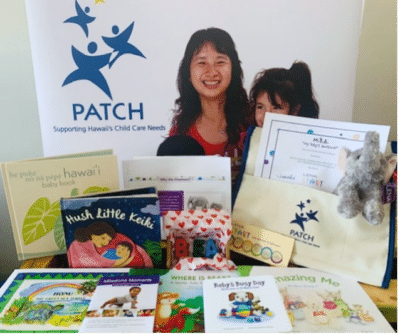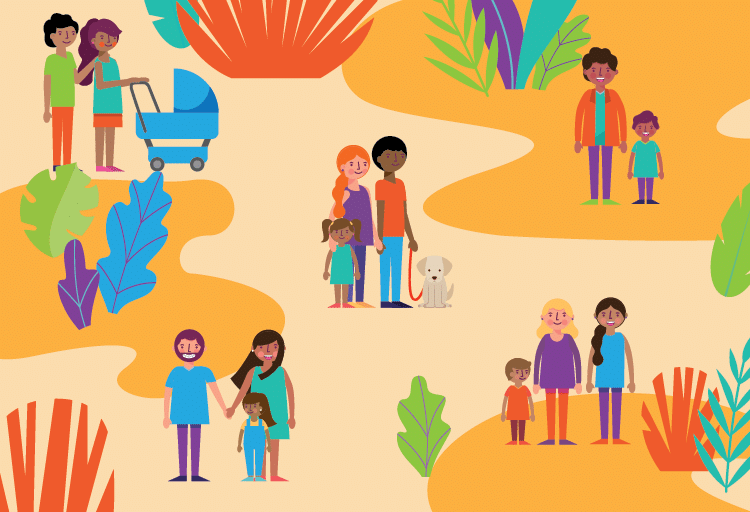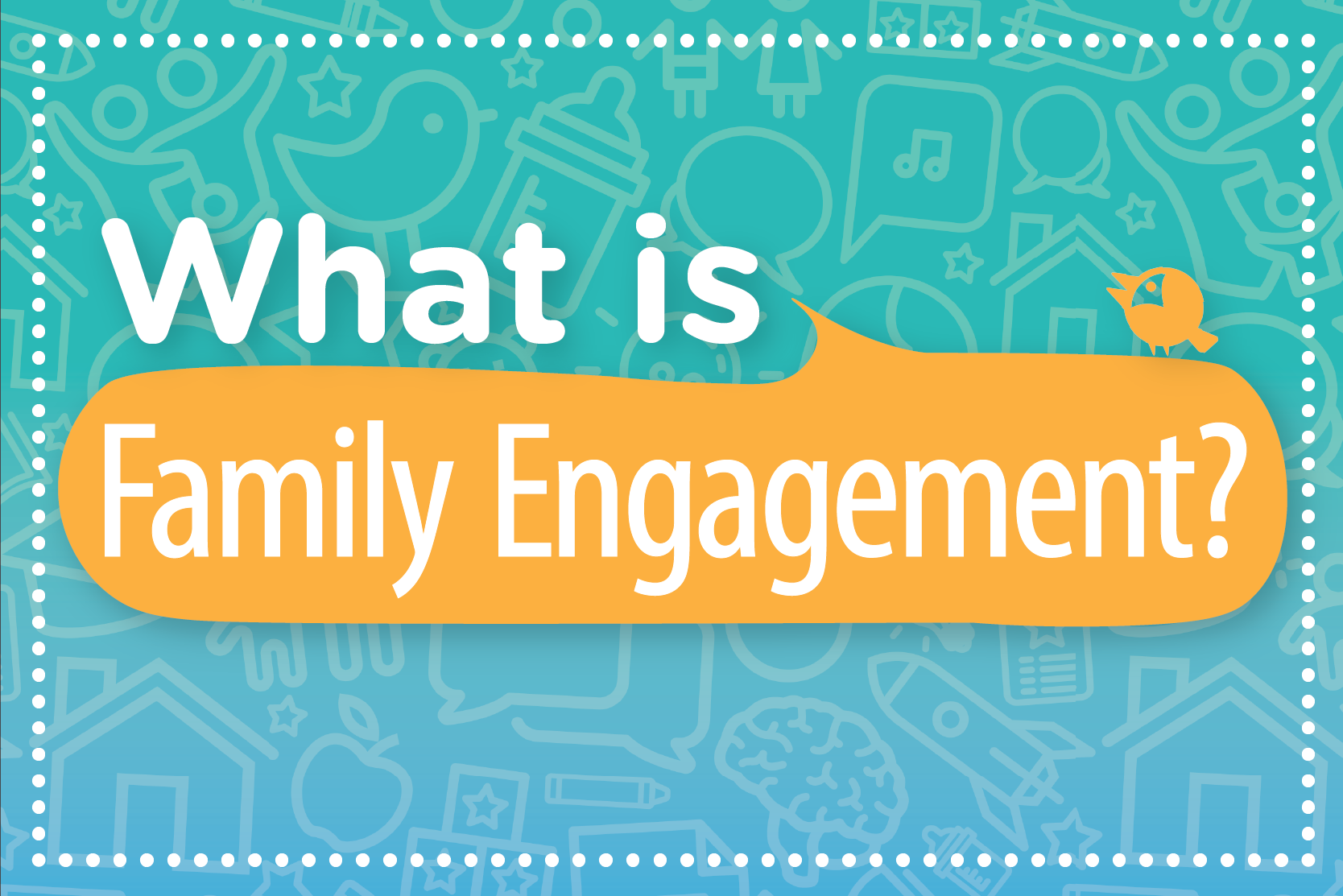May is Asian American and Pacific Islander (AAPI) Heritage Month. Though we can and should celebrate AAPI heritage every day, we want to take time to acknowledge this important month. Asian and Pacific Islander Americans have contributed to the making of this country through their culture, their leadership, and their achievements. The rise in recent anti-Asian hate crimes has made this month an emotional one for many members of the AAPI community across the country. Beyond the hashtag #StopAsianHate is also the strong belief that we need to tell the stories and celebrate the joy and resiliency of this community.
We hope this month is also a call to action for all of us when we look at the beautiful diversity and fabric of this country. Beyond learning and educating ourselves about the broad history and legacy of Asian Americans in this country, we should also intentionally be more culturally in tune with families and people who identify as AAPI.
We want to uplift two partners today who amplify, through their work, the powerful stories of their communities.
Cultural Responsiveness at PATCH and Family Hui Hawaiʻi
Building community, along with creating lasting connections, starts with being culturally responsive. Two organizations in Hawaiʻi, PATCH and Family Hui Hawaiʻi (“Hui” is Hawaiʻian for “group”), are doing exactly this with LENA Start. PATCH is also adding LENA Home to its program offerings. Both Family Hui Hawaiʻi and PATCH use LENA Start as part of their work to lift up families as children’s first and most influential teachers in life. They also use LENA Start to help make sure every child enters school 
Hawaiʻi has a unique history and culture all its own, with many connections interwoven to the AAPI community. It’s a very diverse state, to say the least. Roughly a quarter of its residents come from multi-ethnic backgrounds, it’s majority-minority, and over 130 languages are spoken there. Family Hui and PATCH likewise serve diverse groups of people — native to Hawaiʻi, the Polynesian islands, China, Vietnam, Japan, the Philippines, and more. When it came time to implement the LENA Start curriculum, they were intentional about practicing cultural responsiveness and making it easy for everyone’s voice to be heard.
Here are some of the strategies they’ve incorporated:
Intentionally creating group culture
Family Hui and PATCH open their sessions with a conversation starter, helping parents connect with each other and build trust in the group. This creates the foundation for sharing. Family Hui uses image-based conversation starters, such as a parent with lots of talk bubbles around their head, to draw out responses to open-ended questions — for instance, “What is on your mind this week?” Parents respond well to having a space to share what else in going on in their lives.
Likewise, PATCH uses lighthearted “questions of the day” that focus on the parent first. Leialoha Snyder from PATCH says, “I really love using the conversation starter questions at the beginning of the session because it is not necessarily child-focused, but leaves room for the parent response, too.” One of the questions Leialoha has used recently is simple, but leads to interesting exchanges: “If your house could be made of anything, what would it be?”
Using everyday moments to create space for learning about different cultures and experiences
Gwen Dufault from Family Hui points specifically to food as a means of bringing people together: “In Hawaiʻi, one of the ways people connect is through food. Here there is food from many different cultures. It is a commonality. People get to know each other and connect through sharing food. People like to share about themselves and food is one way to do that. So we talk story around food and use it as a way to connect.”
Similarly, Leialoha says, “Because all of the moms are not from here, often there are ways that they say or do things differently. So we try to be open and accepting to different ways of doing things. This could be as simple as discussing the different foods that people eat while in the session. For example, one mom was eating ube, a sweet potato, and another mom had never seen this before. Each time like this is an opportunity for learning and sharing.”
Focusing on strengths
Both organizations strive to draw attention to the positive. They look to build on parent strengths. “I focus on sharing that the parents are already communicating with their children and doing amazing things,” says Leialoha. “We are sharpening the tools that they already have and the varying ways they communicate with their child. We’re highlighting that they are already doing these things.”
Acknowledging that it’s a been a challenging time, Leialoha says she has begun incorporating hanu (to breathe) and ha (breath) at the beginning of her sessions: three breaths for five seconds each.
Choosing culturally relevant books
In addition to working with interpreters to conduct discussions during LENA Start sessions, the organizations encourage families to speak in their native language at home with the reading books they give to families each week. Along with books from the Centers for Disease Control and Prevention (CDC) on child development, they choose books from local publishers written by local authors and illustrators. Honu the Green Sea Turtle, by Barbara E. Berg, and Puke No Na Pepe Hawaiʻi, by Paige Brattin, have bilingual pages that let children and caregivers explore new words together. Another book, Hush Little Keiki, by Kim Vukovich, features illustrations that beautifully depict Hawaiʻian constellations like the fish-hook and native traditions like hula dancing. Listen to the author read it here.
Identifying inclusive meeting spaces
In Hawaiʻi, it is common to meet outside. It’s also common for extended family members to play a large role in a child’s daily life. Family Hui and PATCH planned their in-person LENA Start groups to use a mix of indoor and outdoor spaces. They also added time at the end of each session for caregivers and children to practice the skills they were learning through play.
Considering families’ needs
When they thought about what local families needed, these organizations realized that ideas and materials for developmentally appropriate activities would be beneficial. They add weekly supplemental activity packets for infants, toddlers, and preschool children that aligned with that week’s LENA Start topic. The kits include age-appropriate toys, such as like jumbo crayons or loop scissors.
Finding shared activities to encourage participation
To create a sense of community, both PATCH and Family Hui use songs as a fun, interactive way of boosting parent participation. They provide the song lyrics for families and then sing the songs together, using finger plays and movement to engage children at varying levels of speech development. Among the songs they share are “Fruit Tree Song“ and “Veggie Song“ (sung to the tune of the nursery rhyme “This Old Man”). PATCH also uses American Sign Language charts with signs for emotions and common words and animals to incorporate into the songs. Parents are surprised at how many signs they’ve learned at the end of the 10 weeks.
PATCH and Family Hui are using these steps to empower the diverse families they serve. “I think the biggest thing is finding their needs and meeting them where they are at and walking together,” says Gwen from Family Hui. “The biggest thing is sending the message that they are doing this. We are learning and growing together during this time. My job is to empower them.”
Family Hui and PATCH are part of Words Matter, a collaborative effort of the Early Childhood Action Strategy, which works across sectors to increase the number of young children in Hawaiʻi who are developing on track and ready for school when they enter kindergarten.
Sisi Dong Brinn, Lead of Early Childhood Partnerships at LENA, contributed to this article. Follow her on Twitter.





